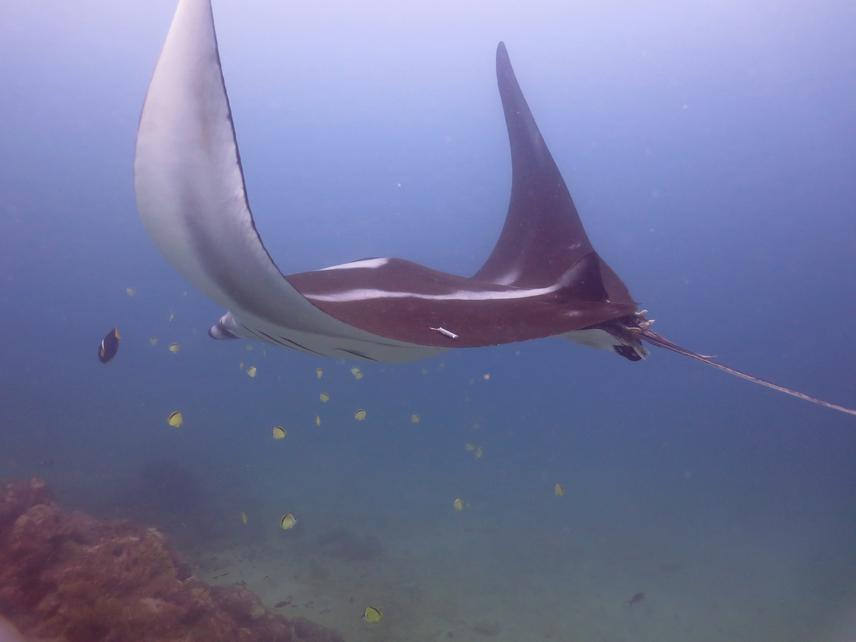Andrea Denise Marshall
Other projects
30 Apr 2013
Ray of Hope: Monitoring and Protecting the World’s Largest Gathering of Giant Mantas I
The largest identified population of Manta birostris has been discovered off mainland Ecuador. Isla de la Plata and Cope, two of the main identified aggregation sites for this species along the coast, represent the finest opportunity to study this threatened ray in the wild and contribute to largely absent biological and ecological information on this species.

Manta ray with acoutic tag.
To date this project has focused on capturing information on the drivers behind the mass migration of thousands of giant manta rays to this region annually. Specifically the team has been trying to gain a greater understanding of the distribution of these rays along the coast, the small-scale habitat use of this species and their seasonal fidelity to aggregation sites within the Machalilla National Park. Unprecedented access to large numbers of Manta birostris allow our team to ask and answer many important biological and ecological questions that are absence from the current literature on the species. Seasonal monitoring of the visiting population will be combined with powerful telemetry studies to investigate local and regional movements within and between critical seasonal habitats. The implications of oceanographic, atmospheric, and biophysical influences on the distribution and seasonal visitation of this species will also be explored. Anthropogenic impacts on the local manta rays population will be quantified and described.
Ultimately it is critical to understand if anthropogenic threats to some populations will have spill over effects into others. With manta rays being both an iconic species important to the national heritage of Ecuador and a species that is important for marine tourism, it is crucial that populations are successfully managed and enjoy lasting protection. Recommendations for threat reduction will be addressed in both local and regional management action plans for the species, using the case study within the park as a model for conflict resolution. Ultimately at the behest of the Ecuadorian government, our team plans to develop local and regional management plans for this species through a structured collaboration with the Ministry of the Environment and beyond this help establish a sustainable tourism industry that may help protect coastal populations rather than exploit them.